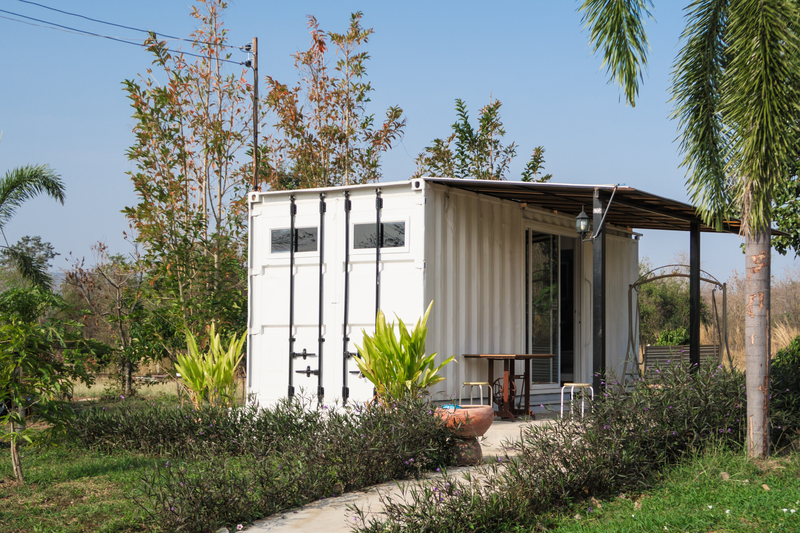Biodegradable Waste: How to Manage Properly
Posted on 03/02/2025
As the world grapples with increasing amounts of waste, one type stands out both for its potential and its challenges: biodegradable waste. Proper management of this waste category can lead to beneficial outcomes, including enriched soil, decreased landfill usage, and reduced greenhouse gas emissions. This article delves into what biodegradable waste is and the best practices for managing it effectively.
Understanding Biodegradable Waste
Biodegradable waste consists of organic matter that can be broken down into simpler forms by the action of microorganisms. Common examples include kitchen waste, garden clippings, and paper products. Unlike non-biodegradable waste, these materials decompose over time, turning into soil-enriching compost or releasing gases that can be captured for energy.

Sources of Biodegradable Waste
Biodegradable waste originates from multiple sources, including households, agriculture, and industries.
- Households: Organic kitchen scraps, paper towels, coffee grounds, and garden waste.
- Agriculture: Crop residues, animal manure, and food by-products.
- Industries: Food processing by-products and biodegradable packaging.
Understanding these sources helps in developing tailored strategies for managing biodegradable waste effectively.
The Importance of Proper Management
Proper management of biodegradable waste has far-reaching benefits:
- Environmental Impact: Reduces methane emissions from landfills, contributing to reduced greenhouse gases.
- Resource Recovery: Composting biodegradable waste returns nutrients to the soil, improving its quality.
- Energy Production: Anaerobic digestion converts biodegradable waste into biogas, which can be used for energy.
Methods of Managing Biodegradable Waste
Source Separation
The first step in managing biodegradable waste is effective source separation. This involves identifying and segregating biodegradable materials at the point of generation. Households, industries, and agricultural setups should have separate bins or areas for organic waste, ensuring it does not mix with non-biodegradable materials.
Composting
Composting is one of the most common and beneficial methods of managing biodegradable waste. This process involves the aerobic decomposition of organic matter, resulting in nutrient-rich compost that can be used to fertilize soil.
- Home Composting: Individuals can manage their kitchen and garden waste through compost bins or piles. Proper layering, aeration, and moisture control are crucial for effective composting.
- Community Composting: Several communities have established composting centers where residents can drop off their organic waste.
- Commercial Composting: Large-scale composting facilities process organic waste from multiple sources, ensuring efficient decomposition and minimal environmental impact.
Anaerobic Digestion
Anaerobic digestion is a biological process where microorganisms break down organic materials in the absence of oxygen. The by-products of this process are biogas and digestate.
- Biogas Production: Biogas, primarily composed of methane and carbon dioxide, can be used as a renewable energy source for electricity, heating, or as a vehicle fuel.
- Digestate: The solid and liquid remnants, known as digestate, can be used as a bio-fertilizer, enriching soils with nutrients.
- Small-Scale Digesters: These can be implemented at the household or community level, converting kitchen waste and small quantities of animal waste into biogas and fertilizer.
Challenges in Managing Biodegradable Waste
Contamination
Contamination occurs when non-biodegradable materials mix with biodegradable waste, complicating the decomposition process. To combat this, stringent monitoring and public education campaigns are essential.
Infrastructure
Developing the necessary infrastructure for composting and anaerobic digestion can be capital-intensive. Municipalities and governments need to prioritize investments in these technologies to ensure efficient management.
Public Awareness
Many people remain unaware of the best practices for managing biodegradable waste. Education and awareness campaigns are crucial to make individuals and organizations comprehend the importance and methods of dealing with this waste effectively.

How to Encourage Proper Biodegradable Waste Management
Several strategies can be employed to promote effective management of biodegradable waste:
Legislative Measures
Governments can enact laws and regulations that mandate the segregation and proper disposal of organic waste. Compliance can be incentivized through subsidies or penalized through fines for non-adherence.
Incentives for Composting and Biogas Production
Governments and organizations can offer financial incentives for individuals and businesses engaged in composting or biogas production. This could include tax breaks, grants for equipment, or performance-based subsidies.
Public Awareness Campaigns
Informative campaigns can educate the public on the benefits of proper biodegradable waste management. Workshops, seminars, and informational materials can be disseminated to encourage participation from all sections of society.
Conclusion
Proper management of biodegradable waste offers significant environmental and economic benefits. While challenges exist, they can be overcome through comprehensive strategies that include efficient segregation, composting, anaerobic digestion, legislative measures, and public education. By adopting best practices, both individuals and organizations can contribute to a more sustainable and less wasteful future.
Managing biodegradable waste effectively is not just an environmental responsibility but also a sustainable practice that reaps multiple rewards: enriching soil, reducing landfill usage, and producing renewable energy. The time to act is now.

 020 3744 5712
020 3744 5712










